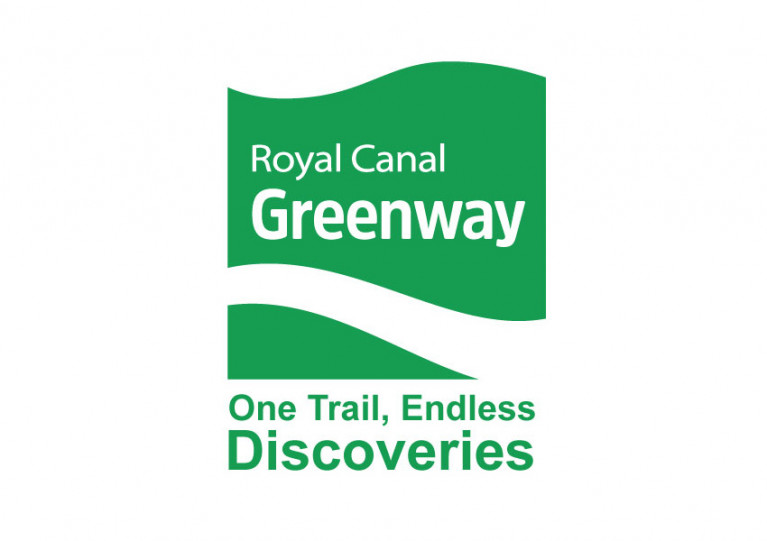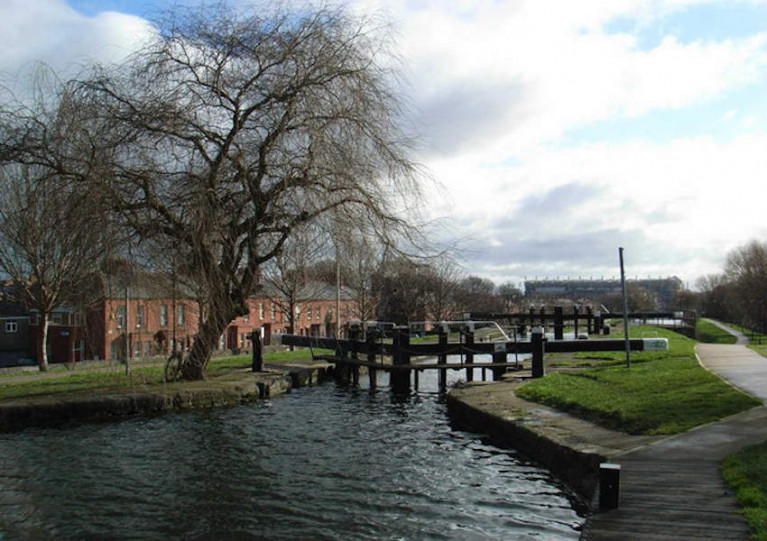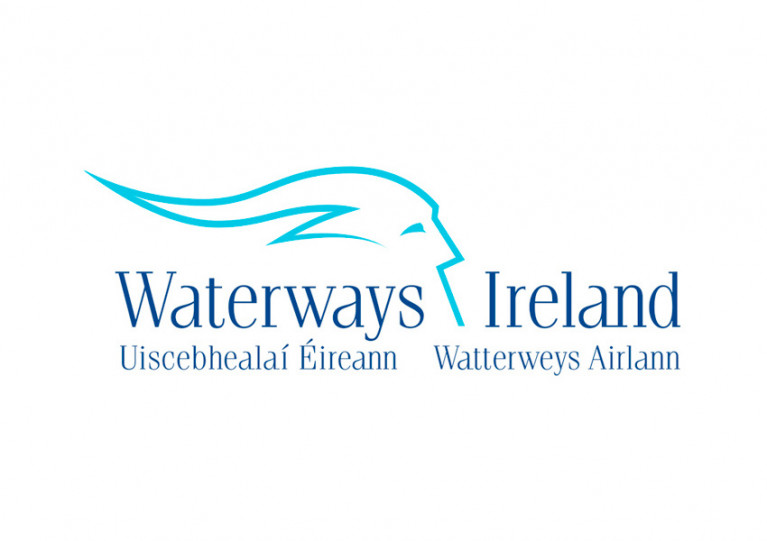Displaying items by tag: Royal Canal
Waterways Ireland advises masters and users of the Shannon Navigation that the ESB will be carrying out repairs to the electricity network in the Tarmonbarry area in Co Roscommon tomorrow, Monday 12 July.
As a result, Tarmonbarry lifting bridge and lock will be inoperable behttps://afloat.ie/itemlist/tag/Shannon%20Navigationtween 9am and 4pm during the repair works and no passage will be permitted until their completion.
The cross-border body for Ireland’s inland waterways also notes that due to ongoing mechanical issues, Begnagh Bridge on the Royal Canal will be opened by manual means on the following dates only: Fridays 16, 23 and 30 July and Fridays 6, 13, 20 and 27 August.
Lifts will occur at 12pm on each day and prior notice must be given two days in advance to the water patroller in Clondra at +353 (0)87 915 1400.
Manual Lift Dates for Begnagh Bridge on Royal Canal
Waterways Ireland advises master of vessels on the Royal Canal that due to ongoing serious mechanical issues with Begnagh Lift Bridge, it can only be operated manually.
The current scheduled dates for lift operation are Fridays 25 June, 2 and 9 July at 11am each day.
Prior notice must be given two days in advance to the water patroller in Clondra on 087 915 1400.
Waterways Ireland has issued an update for masters and owners regarding boat passage arrangements in or out of Dublin on the Grand and Royal canals in 2021.
Movements in or out of the city will continue to be organised by prior arrangement to take place as a single movement in one day.
Boaters will be facilitated to travel the system if their passage is considered to be safe by Waterways Ireland and they have the valid permit(s) for mooring and passage.
In order to plan the necessary lock assistance for movements east of Lock 12 on either canal, masters are required to contact the Waterways Ireland Eastern Regional Office by email [email protected] or 01 868 0148 prior to making passage.
At time of making contact, masters are asked to provide the following details:
- Length, beam, water & air drafts of your craft (provide approximates if don't have exact dimensions)
- Phone/email contact details
- Permit number and expiry date of current canal permit
On the Grand Canal, a minimum of two days’ notice prior to planned passage must be given and, with the exception of pre-arranged events, a maximum of two boats per day will be taken through the locks, travelling either east or west. In certain circumstances, eg for slower or larger barges, the limit will be one boat per day.
Due to periodic anti-social activity along some of canal route into Dublin, boat passage will also not be possible in certain weather conditions and at weekends over the late spring and summer period. This can be planned for at time of making contact, and suitable arrangements for passage made.
On the Royal Canal, repairs and upgrades are ongoing to Spencer Dock Sea Lock so boat passage through here remains suspended at this time and no bridge lift dates have been set for Newcomen Lift Bridge. Should there be updates to this position, details of these will be advised in a separate notice.
Masters and owners are also reminded to ensure that they have the following before making the passage through the city locks on either of these inland waterways:
- Adequate fuel on board
- Competent and adequate crew to operate the boat and locks (minimum crew of three)
- A lock key on board their boat
- Mooring lines of adequate length to handle vessel through a lock (approx.15m length)
- No known mechanical problems with their boat
Waterways Ireland reserve the right to postpone passage to another day if all of these are not in place.
Passages can be arranged in this boating season from June until the end of October. Also note that aquatic weed is generally more prevalent as the season progresses which can hamper passage.
Boaters will be facilitated as far as practicable although Waterways Ireland cannot guarantee that passage will be possible on every planned date. Early contact will greatly assist planning and facilitate the making of the necessary arrangements.
Closure of Royal Canal in Dublin for Lock Gate Repairs
Waterways Ireland notifies users of the Royal Canal that navigation in and out of Dublin is suspended until the completion of various lock gate repair works.
Repairs and/or upgrades are being conducted at Lock 12 in Castleknock, Lock 10 in Ashtown and the Spencer Dock Sea Lock.
In addition, users of the towpath between Lock 3 on Whitworth Road and Lock 5 at Cross Guns in Drumcondra are advised that Iarnród Éireann will be undertaking works to the boundary wall over the coming weeks.
Any impact on towpath use should be limited, but pedestrian management measures will be put in place if required and the canal towpath will remain open throughout, Waterways Ireland says.
Waterways Ireland has notified masters of vessels on the Royal Canal that the lift bridge at Begnagh in Co Longford will be out of operation until Monday 24 May for emergency repair works.
Waterways Ireland advises all masters of vessels and inland waterways users of the Shannon Navigation, Shannon-Erne Waterway, Grand Canal, Royal Canal, Barrow Line and Barrow Navigation that these waterways will reopen from Monday 10 May in line with the latest relaxation in pandemic restrictions.
On the Shannon Navigation and Shannon-Erne Waterway, the winter mooring period will end on this date and the five-day mooring rule will be in force.
Locks on will be open normal summer hours (9am to 8.30pm on weekdays, 9am to 6pm on Sundays on the Shannon Navigation; 9am to 8pm daily on the Shannon-Erne) and service blocks will also reopen.
An exception applies to the lock gates at Tarmonbarry on the Shannon Navigation, which remain closed for continued emergency repair works until Friday 28 May. Passage through the lock will not be possible during this period but an alternative route via the Camlin River is available.
No lock passage tolls will be collected in order to facilitate social distancing. Note that a smart card is required to operate locks on the Shannon-Erne Waterway and these can be purchased from Waterways Ireland’s online shop or from designated retails outlets along the waterway.
Shannon Navigation lock-keepers are available at the following phone numbers:
- Lough Allen Canal - 071 964 1552
- Clarendon Lock - 071 966 7011
- Albert Lock - 071 963 7715
- Rooskey Lock - 071 963 8018
- Tarmonbarry Lock - 043 332 6117
- Athlone Lock - 090 649 2026
- Poolboy Lock - 090 964 4938
- Victoria Lock - 057 915 1359
- Portumna Bridge - 090 974 1011
- Ardnacrusha - 061 344 515
- Sarsfield Lock - 087 797 2998
Anyone who require assistance along the Shannon-Erne Waterway, meanwhile, is directed to contact the following:
- Ballyconnell Waterway Patroller - 087 260 3662
- Kilclare Waterway Patroller - 087 260 3663
Normal summer hours will also apply to locks on the Grand Canal, Royal Cabal, Barrow Line and Barrow Navigation.
Electricity and water services have been reconnected at all Waterways Navigations in the Republic, and normal pump-out facilities are available for boaters.
Visitors to the waterways are urged to be aware of other users and continue to observe social distancing protocols, keen a distance of at least two metres from others.
Waterways Ireland also notes that water levels are becoming low due to the recent period of low rainfall. In addition, normal maintenance weed-cutting of navigation channels has been late in starting due to the ongoing restrictions, so additional weed growth can be expected in the navigation channels.
Masters are asked to contact the local waterway patroller for updated information if wishing to navigate a particular area.
The Historic 130km Royal Canal Greenway Officially Launches
The Royal Canal Greenway, a scenic 130km walking and cycling amenity stretching alongside the historic 225-year-old canal, officially launches today ahead of the summer 2021 season. The €12 million project co-ordinated by Waterways Ireland is the country’s longest Greenway, traversing through Kildare, Meath, Westmeath and Longford. Those wishing to experience the Royal Canal Greenway are advised to adhere to Government guidelines on movement and social distancing.
The newest outdoor adventure tourism attraction for the country, the Royal Canal Greenway is a former towpath for barges featuring 90 bridges, 33 locks, 17 harbours and four aqueducts. Greenway users can choose to complete the entire 130km flat, off-road trail in one visit or explore the shorter designated routes — ranging from 6km to 15km — between the 14 connecting access points and towns.
 Longford Bridge, Ballymahon in County Longford on the Royal Canal Greenway
Longford Bridge, Ballymahon in County Longford on the Royal Canal Greenway
High-profile attractions linking onto the Royal Canal Greenway are trails to Carton House in Maynooth; Corlea Trackway Visitor Centre — one of the largest prehistoric roads in Europe — in Longford; and Center Parcs. The 165km self-guided National Famine Way also travels largely along the Greenway, following the footsteps of 1,490 emigrants who walked from Roscommon to Dublin at the peak of the famine in 1847.
Speaking on the official Greenway opening, Minister for Transport, Eamon Ryan TD said: “We are delighted to launch the Royal Canal Greenway, a game changer for outdoor tourism, and leisure in Ireland and part of a growing network of greenways we will fund over the lifetime of this government. As Ireland’s longest greenway, stretching from the towns of Maynooth, Enfield, Mullingar, Longford and Cloondara, the Royal Canal Greenway has huge potential to serve as a haven for so many looking to get out and get active.
“In the past year, Ireland’s great outdoors has proved to be a lifeline for the nation, with a surge in those running, walking and cycling. When we travel again, the Royal Canal Greenway will be a fantastic attraction ready to be enjoyed by all and is easily accessible from towns and cities across Ireland including via public transport. There really is no better way to experience the unspoilt open scenery, wonderful waterways, peaceful atmosphere and rich history of Ireland’s Ancient East and Hidden Heartlands than on the off-road Royal Canal Greenway.”
 The Royal Canal Greenway at Westmeath
The Royal Canal Greenway at Westmeath
The Greenway has been completed in partnership with Waterways Ireland; the four local authorities of Kildare, Longford, Meath and Westmeath County Councils; the Department of Transport, and Transport Infrastructure Ireland.
Minister of State at the Department of Housing, Local Government and Heritage, Malcolm Noonan, TD added: “This is a Greenway that has a remarkable past. From its tragic connection with the famine, to its heyday in the mid-1880s when it was the motorway of its time, the Royal Canal Greenway is an amenity that is continually reimagining and reinventing itself. It is fantastic to see it become a significant outdoor tourism and leisure amenity for Ireland — a 225-year-old engineering marvel that is now a respite for the modern age. As we look to a greener future, this Greenway will be an instrumental vehicle for the promotion and development of sustainable tourism in Ireland.”
CEO of Waterways Ireland John McDonagh stated: “We thank all stakeholders for their involvement, in particular the local communities who have been so invested in this Greenway. For them, this will have added economic benefits through job and new business creation with a wide range of accommodation options, bike hire offerings, attractions, as well as restaurants and cafes along the route. We ask the people of Ireland, when safe to do so, to uncover the treasures of the Royal Canal Greenway, an unforgettable new addition to the Irish outdoor adventure scene.”
 Kilcock Harbour in Kildare on the Royal Canal Greenway
Kilcock Harbour in Kildare on the Royal Canal Greenway
The Royal Canal Greenway also forms part of EuroVelo 2, a 5,000km “Capitals Route” that passes through Ireland, the UK, the Netherlands, Germany, Poland, Belarus and Russia.
Virtual Launch of the Royal Canal Greenway This Wednesday
Transport Minister Eamon Ryan will be joined by Malcolm Noonan, Minister of State at the Department of Housing, Local Government and Heritage, for the virtual launch of the Royal Canal Greenway this coming Wednesday 24 March.
No pre-registration is required for the Waterways Ireland live stream, which will be available from 10am HERE.
Royal Canal Towpath Works Near Phibsborough
Waterways Ireland advises that site investigation works will take place on the Royal Canal towpath east of Phibsborough until next Wednesday 10 March.
These investigate works have been classified as critical infrastructure works so they will continue over the current period of increased COVID-19 restrictions.
The towpath will remain open but Waterways Ireland says users should exercise due care and caution when passing any vehicles or plant machinery along the path.
Towpath Maintenance on Royal Canal’s Lough Owel Feeder
Waterways Ireland notifies towpath users that sections of the towpath on the Lough Owel feeder of the Royal Canal from Mullingar Harbour to Fish Farm at Cullion will be closed periodically from today, Monday 8 February, until Friday 19 February for essential maintenance works.
































































